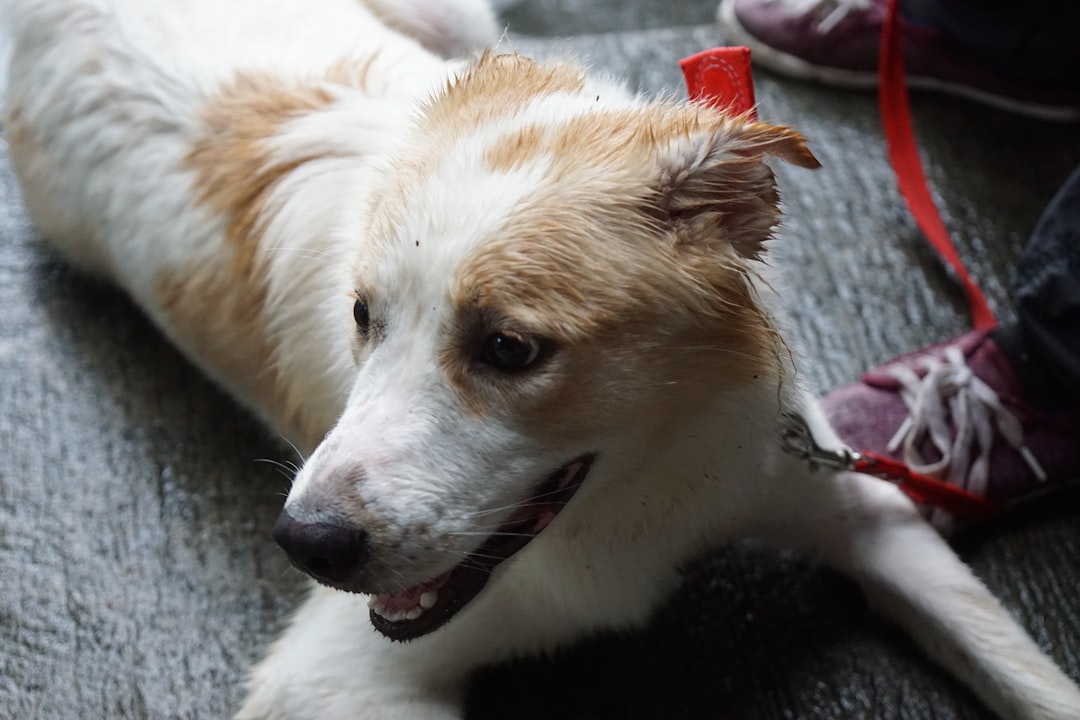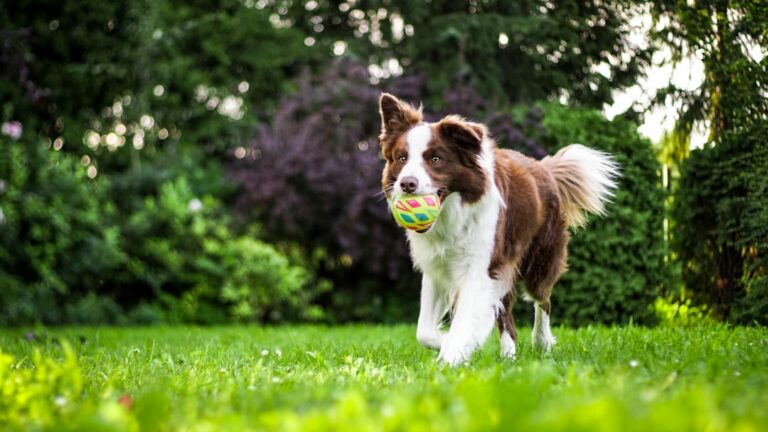Empowering Your Pup: Overcoming Fear and Anxiety in Leash Training
This article discusses the causes of fear and anxiety in leash training for dogs and provides strategies such as positive reinforcement and gradual desensitization to help dogs overcome these challenges.
Introduction to Fear and Anxiety in Leash Training
Leash training stands as a fundamental element in fostering a well-behaved and cooperative canine companion. This training endeavor strives to instill a sense of calm and obedience in dogs while they are on a leash, a skill that is indispensable for safe and enjoyable walks. Yet, the journey toward achieving a serene leash-walking experience is often fraught with obstacles, particularly when fear and anxiety come into play. Such emotional states are not rare among canines undergoing leash training, manifesting through various behaviors that signal distress. Dogs grappling with anxiety might exhibit a tendency to pull on the leash aggressively, cower in fear, or even refuse to move, colloquially known as ‘freezing.’ These reactions not only complicate the training process but also signal a profound discomfort in the dog, necessitating a compassionate and informed approach to training.
Addressing the challenge of fear and anxiety in leash training demands more than mere persistence; it calls for a comprehensive understanding of the dog’s emotional landscape and an arsenal of training strategies designed to mitigate these feelings. The goal is to create a training environment where the dog feels secure and supported, thereby facilitating a more productive and positive learning experience. Tailoring training methods to suit the individual needs and temperament of each dog is crucial, as is the patience and empathy of the owner or trainer. Through a combination of patience, insight, and carefully chosen training techniques, it is possible to guide dogs past their fears and towards a state of confidence and compliance on the leash.
Common Causes of Fear and Anxiety in Leash Training
Understanding the root causes of fear and anxiety in dogs during leash training is crucial for developing effective training strategies. For many dogs, a negative past experience, such as trauma or abuse, can create a deep-seated association of fear with leashes and harnesses. This association may manifest as anxiety or resistance whenever these tools are introduced, making the training process challenging for both the dog and the owner [6]. In other cases, the lack of early exposure to leashes and harnesses can result in apprehension, as dogs are naturally wary of unfamiliar objects and situations. Without positive early experiences, dogs may view leash training as a threatening rather than a rewarding activity.
Moreover, environmental changes and traumatic events can exacerbate a dog’s anxiety, complicating leash training efforts. Dogs are creatures of habit, and a significant alteration in their living environment—such as relocating to a new home—can induce stress and anxiety. This heightened state of anxiety can make dogs more sensitive to leash training, as they may already feel overwhelmed by their new surroundings. Additionally, a traumatic incident, such as an accident or a frightening encounter with another animal, can further intensify a dog’s fear of being leashed, as they may associate the leash with the negative experience. Recognizing these common causes of fear and anxiety is the first step toward addressing them effectively, paving the way for a more positive and successful leash training experience.
Positive Reinforcement Strategies
Positive reinforcement strategies play a pivotal role in transforming leash training from a stress-inducing activity into a rewarding experience for dogs with anxiety. At the heart of this approach is clicker training, a method that utilizes a simple click sound immediately followed by a treat to signal to the dog that they’ve performed a desired behavior. This technique is particularly effective because it clearly communicates to the dog the exact moment they’ve done something right, thus encouraging repetition of that behavior. For instance, each time a dog walks calmly on a leash without pulling, a click followed by a treat can reinforce this positive behavior, making the dog more likely to repeat it in the future.
Incorporating rewards that resonate with a dog’s personal preferences enhances the effectiveness of positive reinforcement. Some dogs may be more motivated by toys or play rather than treats. In such cases, rewarding calm behavior during leash training with their favorite toy can make the training session highly anticipated, turning a potentially anxious experience into a fun and engaging activity. Moreover, verbal praise, when used in conjunction with treats or toys, adds a layer of human connection and approval that many dogs find rewarding. Phrases like “good dog” or “well done” can build a dog’s confidence and solidify the positive association with leash training. These methods not only foster a more enjoyable training experience but also contribute to a deeper bond between the dog and their owner. To explore further how personalized training programs can cater to your dog’s unique needs, visit Madison Dog Trainers – Off Leash K9 Training of Madison at https://dogtrainermadison.com/.
Gradual Desensitization Techniques
Gradual desensitization is a cornerstone method for managing fear and anxiety in dogs during leash training. This technique requires patience and care, as it involves introducing the leash to the dog in a non-threatening way, gradually increasing their exposure over time. The key is to start with short, positive encounters with the leash, ensuring that the dog feels comfortable and at ease. For example, initially placing the leash near the dog’s sleeping area without attempting to put it on can help the dog become accustomed to its presence. As the dog shows signs of comfort, you can progress to gently draping the leash over them, rewarding them with treats or their favorite toy to create a positive association. This step-by-step approach helps in building trust and reducing anxiety around the leash, making the dog more receptive to leash training.
Pairing the gradual exposure to the leash with activities that the dog finds enjoyable is another effective strategy to enhance the desensitization process. This could involve integrating the leash into playtime, such as dragging the leash while playing fetch, allowing the dog to associate the leash with fun and rewarding experiences. Over time, as the dog’s confidence grows, the duration and intensity of the leash exposure can be increased. It’s important to closely observe the dog’s reactions and adjust the pace of exposure accordingly to ensure they remain comfortable and stress-free. For dogs with severe anxiety or fear, especially those with a history of negative experiences related to restraint, this careful, positive approach can be transformative. For professional guidance on tailored desensitization techniques and to further explore effective leash training strategies, visiting Madison Dog Trainers – Off Leash K9 Training of Madison offers a wealth of resources and expert support designed to empower both dogs and their owners through fear-free training methods.
Recognizing and Addressing Fear and Anxiety Signs
Recognizing the signs of fear and anxiety in dogs during leash training is a pivotal step in creating a supportive and effective training environment. Dogs exhibit a variety of stress signals that owners should be aware of, including but not limited to excessive panting, drooling, or attempts to flee. These signs may be accompanied by more subtle indicators such as a tucked tail, flattened ears, or a refusal to move. Being observant of these cues is essential for understanding when your dog is feeling overwhelmed or scared.
To effectively address these signs of fear and anxiety, it’s crucial to respond with patience and empathy. Implementing a calm and reassuring approach can make a significant difference. For example, if a dog shows signs of stress by cowering or attempting to escape when the leash is presented, stepping back and giving them space, followed by slowly reintroducing the leash in a non-threatening manner, can help. Pairing the leash with positive experiences, such as treats or gentle petting, can also aid in gradually reducing the dog’s anxiety. This method of positive reinforcement not only helps in alleviating immediate stress but also contributes to building a foundation of trust and comfort around the leash for long-term behavioral wellness. Recognizing and promptly addressing these fear and anxiety signs during leash training sessions is not only beneficial for the dog’s emotional well-being but also enhances the overall training experience, paving the way for a more confident and happy pet.
Seeking Professional Guidance
Overcoming fear and anxiety in leash training can sometimes require more than just patience and persistence from the dog owner. In instances where progress seems to stall, or the dog’s anxiety is particularly severe, enlisting the help of professional dog trainers becomes a prudent choice. Trainers, especially those with specialized experience in dealing with anxious dogs, like the team at Madison Dog Trainers – Off Leash K9 Training of Madison, have a deep understanding of canine behavior. They can provide personalized strategies that are specifically tailored to address the unique challenges your dog faces. Their expertise extends to designing specific desensitization exercises that gradually acclimate your dog to the leash in a stress-free manner, ensuring that each step forward builds on a foundation of trust and confidence.
The value of seeking professional guidance cannot be overstated. Qualified trainers can assess the situation from an objective standpoint, identifying underlying issues that might not be apparent to the dog owner. For example, they can pinpoint specific triggers of your dog’s anxiety and suggest modifications to your training approach that reduce or eliminate these stressors. Moreover, Madison Dog Trainers – Off Leash K9 Training of Madison offers private lessons and behavior consultations that are tailored to your dog’s individual needs, ensuring a more focused and effective approach to overcoming leash training challenges. Their professional insight can help you navigate the complexities of leash training with an anxious dog, ultimately leading to a more rewarding and successful outcome for both you and your pet. For those interested in exploring how professional guidance can transform leash training for their anxious dog, visiting Madison Dog Trainers – Off Leash K9 Training of Madison provides an excellent starting point [Customer Product Context].
Alternative Enrichment Activities for Anxious Dogs
Dogs experiencing severe anxiety might find traditional leash training particularly stressful, making alternative enrichment activities an invaluable approach to their training regimen. Engaging activities like scent work not only captivate a dog’s interest but also harness their natural instincts, providing a fulfilling task that can significantly diminish stress levels. Similarly, agility courses challenge both the mind and body of a dog, offering a comprehensive outlet for pent-up energy and anxiety. Puzzle games, on the other hand, are excellent for indoor stimulation, encouraging dogs to solve problems and engage mentally, which can be particularly beneficial on days when outdoor activities are limited. These activities not only divert the dog’s focus from their anxieties but also strengthen the bond between the dog and its owner through positive interactions.
Moreover, the incorporation of calming aids such as Adaptil products or Thundershirts can play a crucial role in managing a dog’s anxiety. Adaptil products mimic the pheromones mother dogs release to comfort their puppies, providing a sense of security and calm for anxious dogs. Thundershirts work by applying gentle, constant pressure, akin to a hug, which can significantly reduce anxiety for many dogs. These tools can be particularly useful during training sessions, ensuring the dog feels safe and supported while engaging in new and potentially stressful activities. By combining these innovative training aids with enriching activities, owners can create a more positive and stress-free training environment, paving the way for happier, more confident dogs. For more engaging training ideas and expert guidance on managing leash training for anxious dogs, Madison Dog Trainers – Off Leash K9 Training of Madison offers a wealth of resources and professional support. Discover more at https://dogtrainermadison.com/.
Conclusion: Empowering Dogs Through Fear-Free Leash Training
Overcoming fear and anxiety during leash training is more than just about teaching a dog to walk properly; it’s about fostering a deeper understanding and trust between pets and their owners. By adopting strategies such as positive reinforcement, where dogs are rewarded for calm and desired behaviors, and gradual desensitization, which carefully exposes them to their fears in a controlled manner, owners can significantly improve their dogs’ confidence and well-being [6]. These methods not only make the leash training process enjoyable but also strengthen the bond between dogs and their owners, creating a harmonious relationship based on mutual respect and understanding.
For those facing challenges in this journey, seeking professional help can be a game-changer. Madison Dog Trainers – Off Leash K9 Training of Madison specializes in transforming the leash training experience into a positive and empowering one for both dogs and their owners. With a team of experienced trainers who understand the intricacies of fear and anxiety in dogs, they offer personalized training programs that are tailored to meet the specific needs of each dog. Whether your dog is struggling with severe anxiety or you’re simply looking for ways to improve your leash training techniques, Madison Dog Trainers provides the expert guidance and support needed to navigate these challenges successfully. Explore their training programs and discover how they can help you and your furry friend achieve fear-free leash training by visiting https://dogtrainermadison.com/ for more details.











